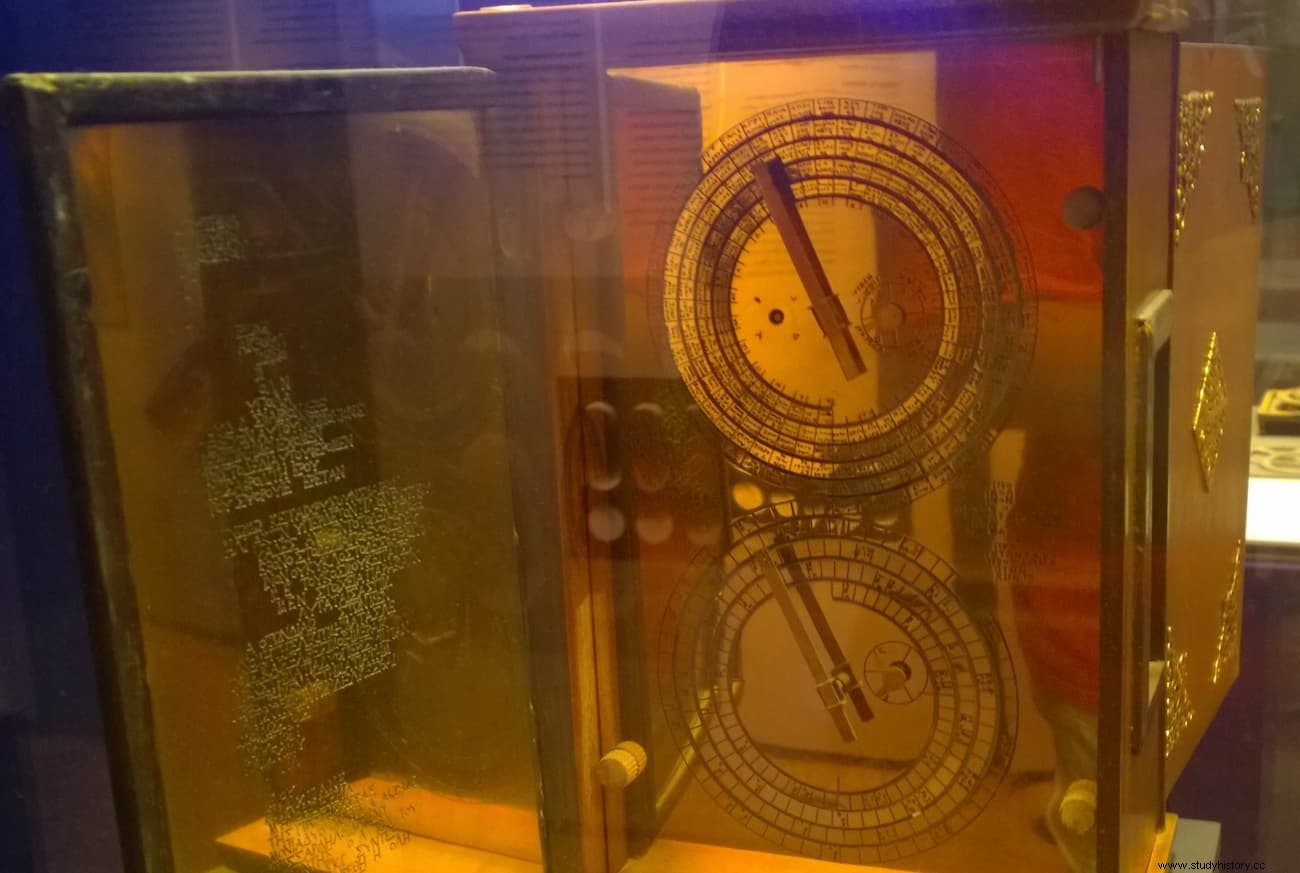Researchers at University College London (UCL) have solved an important piece of the puzzle that constitutes the ancient Greek astronomical calculator known as the Antikythera Mechanism, a hand-operated mechanical device used to predict astronomical events.
Known by many as the world's first analog computer, the Antikythera Mechanism is the most complex piece of engineering to survive from the ancient world. The 2,000-year-old device was used to predict the positions of the Sun, Moon, and planets, as well as lunar and solar eclipses.
Published in Scientific Reports, the article by the multidisciplinary research team at UCL reveals a new example of the ancient Greek order of the Universe (Cosmos), inside a complex system of gears at the front of the Mechanism.
Lead author Professor Tony Freeth (UCL Mechanical Engineering) explained:Ours is the first model to conform to all physical tests and match the descriptions in the scientific inscriptions etched into the Mechanism itself .
The Antikythera Mechanism has generated both fascination and intense controversy since its discovery in a Roman-era shipwreck in 1901 by Greek sponge divers off the small Mediterranean island of Antikythera.
The astronomical calculator is a bronze device consisting of a complex combination of 30 gears used to predict astronomical events, such as eclipses, phases of the moon, positions of the planets, and even dates of the Olympic Games.

Although great progress has been made in the last century in understanding its operation, studies carried out in 2005 with 3D X-rays and images of the surface allowed researchers to show how the Mechanism predicted eclipses and calculated the variable movement of the Moon. .
Until now, however, fully understanding the gear system at the front of the device has eluded researchers' efforts. Only a third of the Mechanism has survived, which is divided into 82 fragments, posing a daunting challenge for the UCL team.
The largest surviving fragment, known as Fragment A, bears features of bearings, pillars, and a block. Another, known as Fragment D, features an unexplained disc, a 63-tooth gear, and a plate.
Previous research had used X-ray data from 2005 to reveal thousands of text characters hidden inside the fragments, unread for nearly 2,000 years. Back cover inscriptions include a description of the unfolding of the cosmos, with the planets moving on rings and indicated by marker beads. The team worked to rebuild this part.
Two critical numbers on the cover X-rays, 462 and 442 years, accurately represent the cycles of Venus and Saturn respectively. When viewed from Earth, the cycles of the planets sometimes reverse their motions against the stars. Experts must follow these variable cycles for long periods of time in order to predict their positions.
Classical astronomy of the first millennium B.C. originated in Babylon, but nothing in this astronomy suggested how the ancient Greeks found the highly accurate 462-year cycle for Venus and the 442-year cycle for Saturn explained Aris Dacanalis, a member of the research team.
Using an ancient Greek mathematical method described by the philosopher Parmenides, the UCL team not only explained how the cycles of Venus and Saturn were obtained, but also managed to recover the cycles of all the other planets, for which there was no evidence.
Team member David Higgon explained:After considerable struggle, we were able to match evidence from fragments A and D to a mechanism for Venus, which accurately models its 462-year planetary period relationship to the 63-tooth gear playing a crucial role.
Professor Freeth added:The team created innovative mechanisms for all the planets that would calculate the new advanced astronomical cycles and minimize the number of gears in the entire system, to fit in the small spaces available.
This is a key theoretical breakthrough on how the Cosmos was built in the Mechanism added co-author Dr Adam Wojcik (UCL Mechanical Engineering). Now we must prove its viability by manufacturing it using ancient techniques. A particular challenge will be the system of nested tubes that transported the astronomical products .
